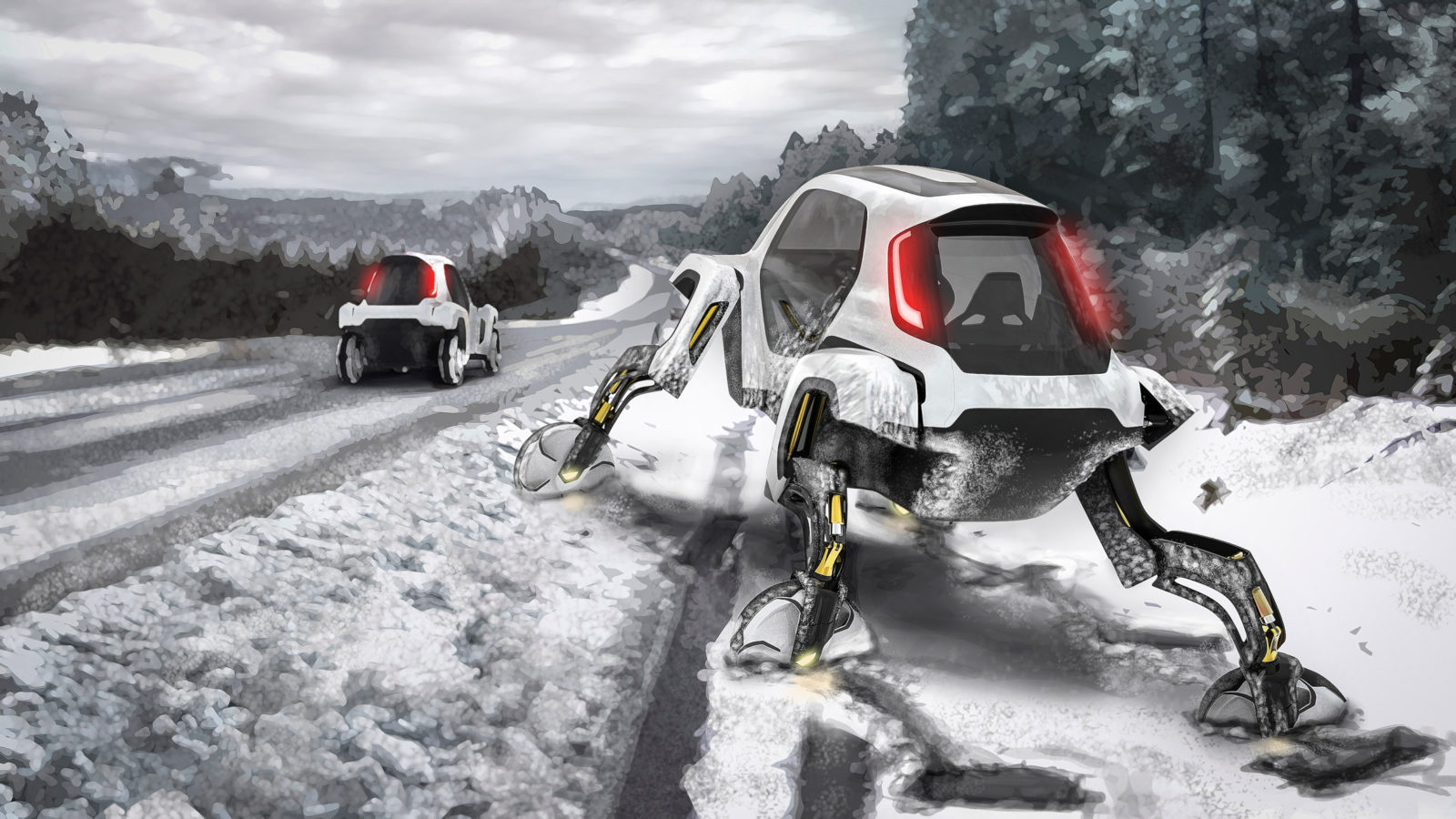South Korean carmaker Hyundai has revealed its concept for a vehicle with robotic legs that could save lives as a first responder in natural disaster zones.
Unveiled at this year’s Consumer Electronics Show (CES) in Las Vegas, Hyundai’s Elevate concept is an electric car with robotic legs that can be extended to drive and be used for walking.
The concept is designed to help emergency workers travel across harsh terrain in the event of a natural disaster.
“Any first responder will tell you that the first 72 hours following a natural disaster are the most crucial to saving lives,” said the creators.
“However, often times due to the nature of the disaster (forest fire, earthquake, hurricane, or flood), it can be difficult for search-and-rescue and humanitarian aid missions to reach and get immediate help to those in need.”
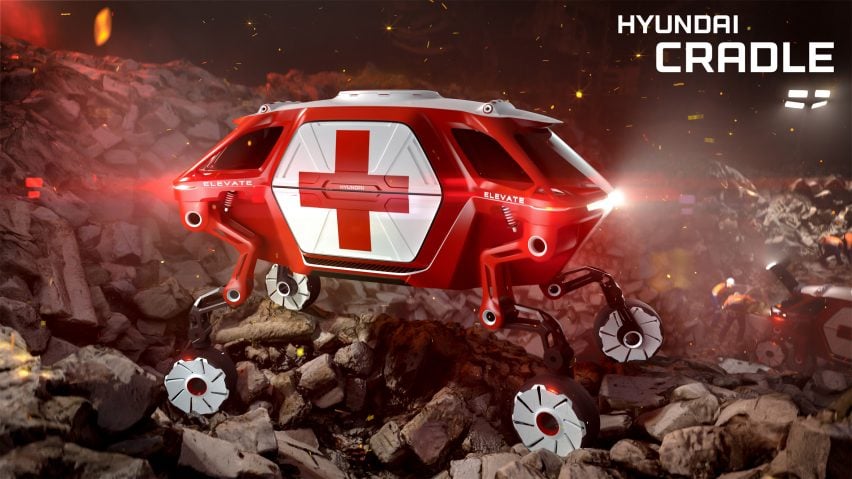
Hyundai developed the concept to be faster, more efficient and resilient than ordinary off-road vehicles.
The resulting design is based around a modular electric vehicle chassis architecture, which features interchangeable bodies that can be swapped depending on the situation and environment.
Four robotic legs that extend from the body give the vehicle the option of driving, walking or climbing in any direction across different landscapes, helped by torsional control at the end of each leg.
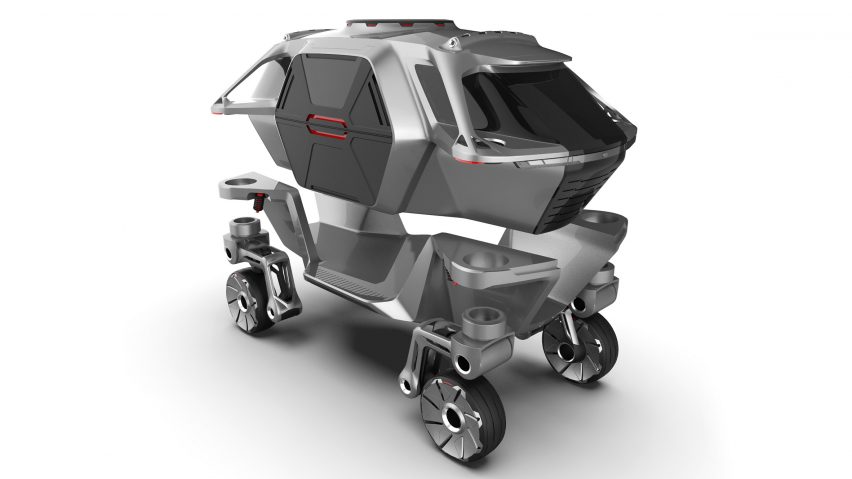
The design relies on Hyundai’s latest electric actuator technology, which grants the vehicle’s robotic leg architecture six degrees of freedom, meaning it has six independent aspects of motion.
These are vertical hip, horizontal hip, knee, ankle, steering and wheel. Each wheel is also powered by a hub propulsion motor.
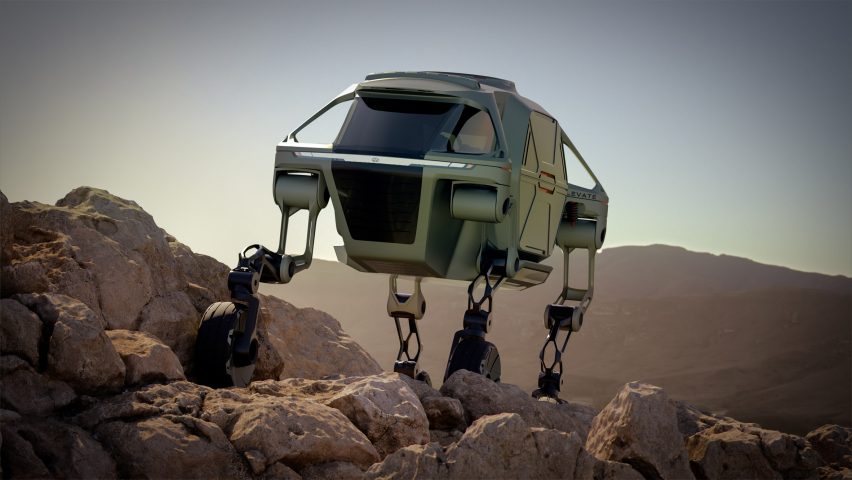
With its wheels fully extended the vehicle can cross landscapes that even the most capable off-road vehicles would not be able to.
Called “active suspension” this mode of driving causes the legs to follow the uneven terrain while keeping the car body level.
It also has two walking modes – reptilian, where the legs are positioned outwards either side of the body, and mammalian, where the legs point out in front and behind the body.
Together these modes mean that the vehicle can deliver help to those in need much faster than an ordinary search-and-rescue team. The body also includes four-sided access to ensure aid-workers can get bodies in and out of the vehicle quickly and safely.
“When a tsunami or earthquake hits, current rescue vehicles can only deliver first responders to the edge of the debris field. They have to go the rest of the way by foot.” said head of Hyundai tech centre, John Suh.
“Elevate can drive to the scene and climb right over flood debris or crumbled concrete,” he continued. “This technology goes well beyond emergency situations.”
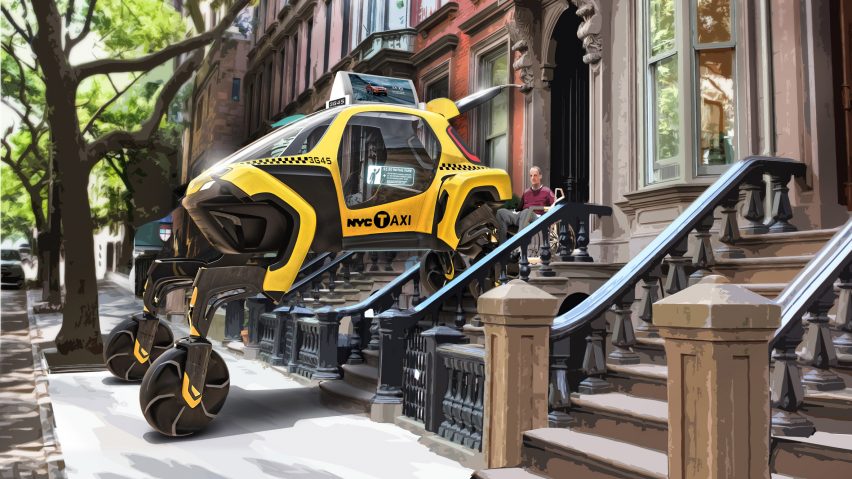
“People living with disabilities worldwide that don’t have access to an ADA ramp could hail an autonomous Hyundai Elevate that could walk up to their front door, level itself, and allow their wheelchair to roll right in,” Suh added. “The possibilities are limitless.”
The legs can also be folded up and stowed away to enter into a normal driving mode. Power to the joints is cut and an integrated passive suspension system is started to maximise battery efficiency, allowing the vehicle to drive at highway speeds like an ordinary car.
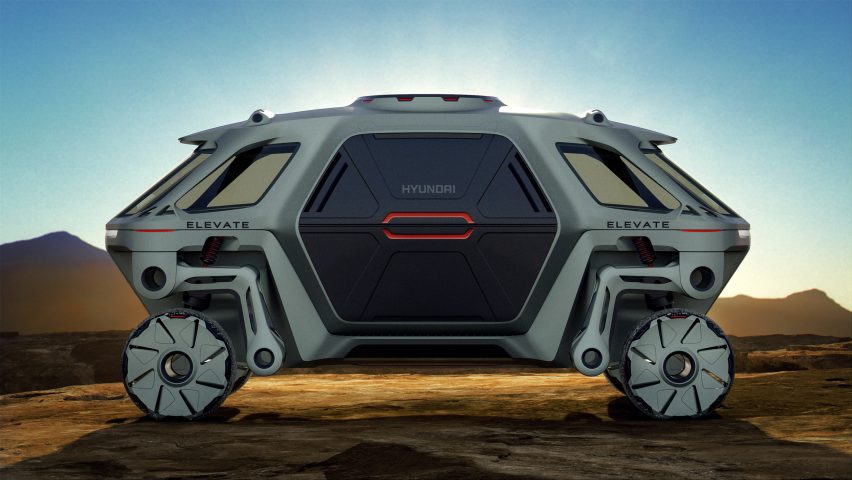
“By combining the power of robotics with Hyundai’s latest electronic technology, Elevate has the ability to take people where no car has been before, and redefine our perception of vehicular freedom,” said design manager David Byron.
“Imagine a car stranded in a snow ditch just 10 feet [three metres] off the highway being able to walk or climb over the treacherous terrain, back to the road potentially saving its injured passengers – this is the future of vehicular mobility,” he added.
Elevate was presented at this year’s CES, the biggest tech trade fair of the year, which is taking place in Las Vegas from 8 to 11 January.
By Natashah Hitti

